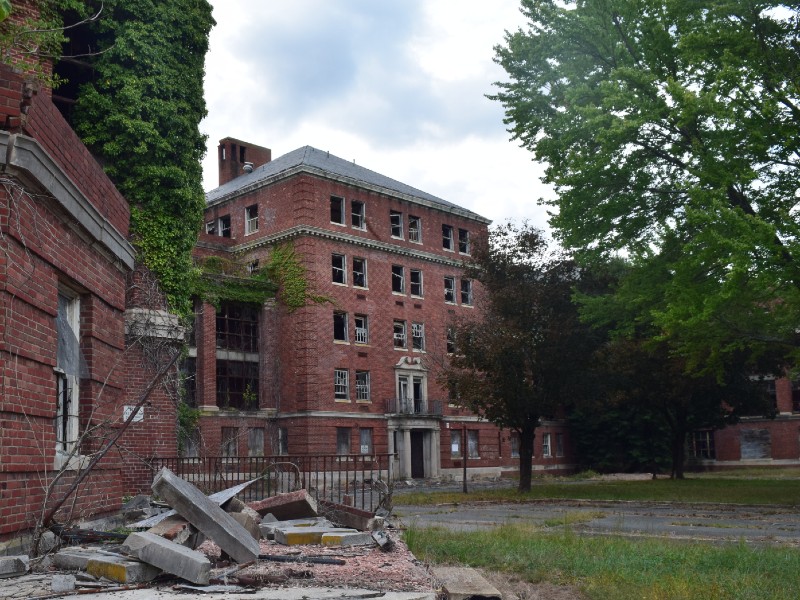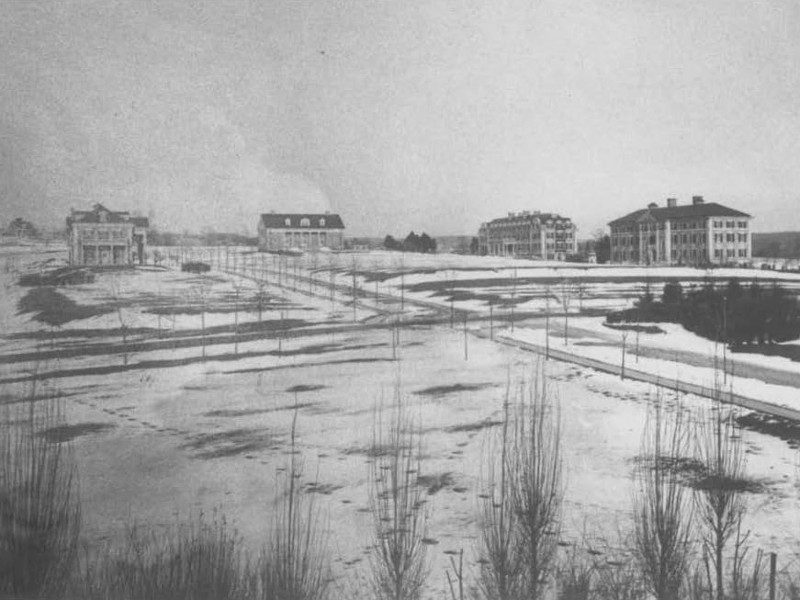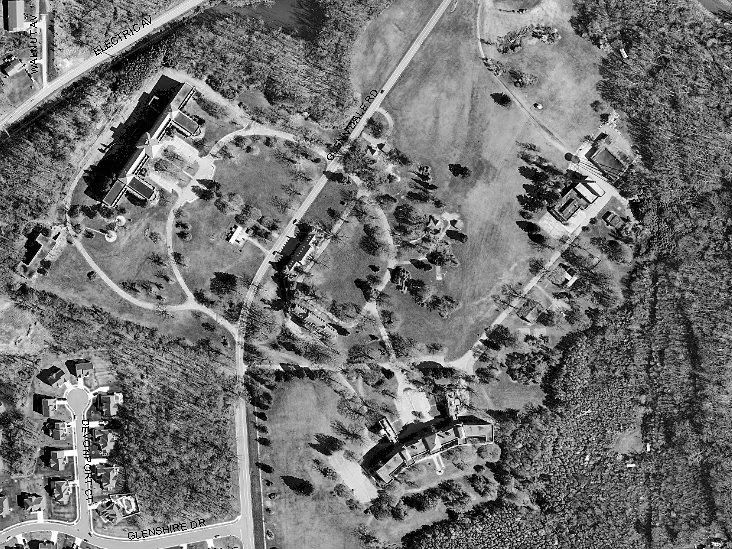What should the State of Maryland do with large vacant historic complexes? A new report prepared for the Maryland Department of Planning calls for strategic policy changes and increased project funding to advance preservation and reuse.
Dozens of stakeholders, including elected and state officials, redevelopment experts, preservationists, and other stakeholders worked with a consultant team led by Cherilyn Widell, principal of Widell Preservation Services to develop an 82-page illustrated report on Maryland’s historic complexes released in January 2020. Preservation Maryland Executive Director Nicholas Reddings served on the study’s steering committee, alongside Robert S. McCord, Maryland Secretary of Planning, Senator Katie Fry Hester, Delegate Regina Boyce, and John Renner, Vice President of Development at Cross Street Partners.
- View of The Tome School in Winter, ca. 1907. Photo courtesy of the Maryland Historical Trust.
- Aerial view of the Glenn Dale complex, 2009.
From the Report: “This Study was mandated by Senate Bill 741 which directed the Secretary of Planning to contract with a consultant to conduct this Study on the adaptive reuse of historic properties located within divested state or federally owned historic complexes. The Study has identified key success factors and primary obstacles to the preservation and redevelopment of historic properties and developed recommendations and an historic resource package of existing, new and improved enticements and programs that could be applied to support projects.”
“The large inventory of historic state-owned buildings includes more than 1,200 structures between just four state agencies. The maintenance of this inventory is expensive, yet the expense is still not sufficient to prevent deterioration. The Maryland Department of Health, for instance, spends more than $2.5 million on grounds maintenance and security on an inventory of pre-1970 buildings, the majority of which are not currently in use.”
CHALLENGES & OPPORTUNITIES
Moreover, the report identified 5 barriers to advance large complex preservation projects in Maryland and later in the report 5 recommendations to begin to overcome them.
State Historic Tax Credit Program
Barrier: With a $3 million per project cap and $9 million annual appropriation, Maryland’s Revitalization Tax Credit Program is not structured adequately to benefit the redevelopment of former state-owned complexes.
Select Recommendations:
- Minimum catalytic credit of up to $35 million to reflect the scale needed to advance large-scale projects at historic complexes.
- Allow the project developer to make an outright transfer or assignment of the earned tax credits to a third party.
- Pair the historic tax credit with additional state and federal development zones.
- Provide access to strategic demolitions funds to clear debris and non-historic structures while also funding anti-vandalism measures to improve marketability.
- Partner with the Campaign for Historic Trades to determine the feasibility of a trades program focused on rehabilitation projects at former government complexes.
Land Use Restrictions
Barrier: Redevelopment options for historic complexes are unduly limited by restrictions on-site planning, use, and density caused by legislation, policy, regulation, easement stipulations, and competing local stakeholder interests.
Condition Assessment Information
Barrier: State-owned historic complexes are not being adequately assessed or evaluated prior to disposition leading to a devaluation of the asset, uncertainty, and a lack of interest from developers and investors.
Disposition Pre-Planning
Barrier: The State lacks a consistent approach and the expertise to plan and implement the disposition of its historic complexes through comprehensive upfront land use, business planning, and entitlement work that would enhance the value of these properties and potentially accelerate their disposition.
Select Recommendations:
- For the needs of state agencies, use or rehabilitate available existing historic buildings instead of acquisitions, new construction, or leasing when practical.
- Conduct preservation maintenance including mothballing to limit asset degradation.
- Conduct historic property surveys, condition assessments, monitoring, and reporting
- Adequately fund due-diligence and pre-disposition planning
- Mandate timelines and standards for planning redevelopment
Preservation Maintenance
Barrier: State agencies are not adequately maintaining historic building complexes before or after disposition. This lack of maintenance ultimately leads to widened funding gaps for redevelopment due to severe structural deterioration.
MODEL CASE STUDIES
The project team chose three undeveloped historic complexes as case studies that illustrate the challenges posed by those barriers. The study locations: Glenn Dale Tuberculosis Hospital and Sanatorium in Prince George’s County, Warfield (Springfield State Hospital Women’s Facility) in Carroll County, and The Tome School for Boys in Cecil County. Foiled by three success catalytic redevelopment projects across the country, the possibilities embodied in Maryland’s historic complexes become even more apparent – as do the needs to set into motion select recommendations to take advantage of the economic opportunities abound.



